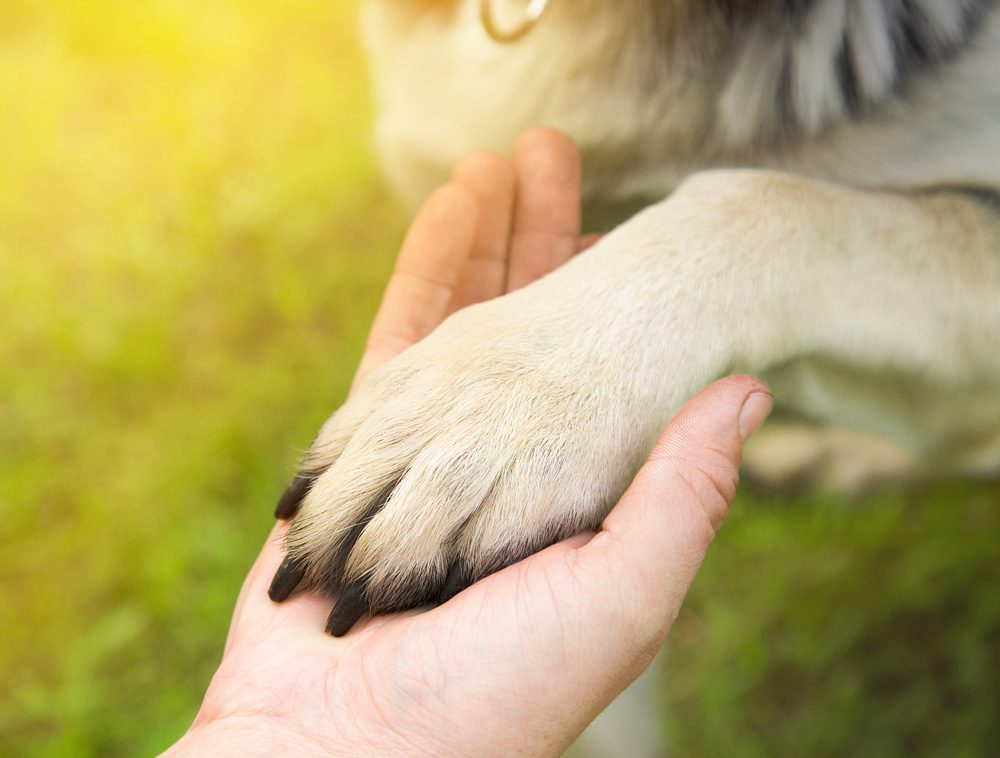September is Animal Pain Awareness month. What a special opportunity to talk about signs of pain in our pets. The biggest question pet owners want to know…. “Is my pet in pain?” Just asking this question shows how much you love your pet and want to support them. Pain is something most of us can relate to. People feel it and so do animals. We all want what’s
best for our pets and pain is just not welcomed.

Our pets can experience discomfort in a few different ways. It may come from acute ‘right now’ pain, brought on by an injury or disease in the body, or it may be more chronic ‘long term’ discomfort that builds over time. Acute pain can become chronic if the body does not heal the first time. Animals are thought to be quite tolerant of pain and this includes pets.
However, the reality is the longer a pet is in pain, the more their body weakens. Pain changes the body (and mind) making them more susceptible to sickness and what looks like early aging. The best thing we can do is stop pain in its tracks as soon as we find it.
What Pain can Look Like for Your Pet
Decreased Activity
Your pet may be more interested in staying put than being active. Activities they used to love doing start to disappear. For example, your dog may take longer to greet new people at the door or they may not want to get up at all. Your cat may not be able to jump up on the bed. Sleeping more is often a sign of pain, as is eating less. A decrease in appetite is common.
Change in Posture
Animals in pain, either mild or severe, start to change how they stand, sit, and even lie down. You may see lameness or difficulty walking. The pet may hold their head and tail in a low position or they may favor one side over the other. When our pets are in pain, they often will adjust their body to get away from what’s hurting them. You may also notice muscle loss on one side of the body or the painful area.
Resistant to Touch
We know that our pets typically like to be touched; to be loved and be close to us. Typically, pets in pain tend to move away and even look afraid. They may be found hiding out in strange places trying to avoid interaction. Mild pain can grow over time leading to more pain. Addressing pain early can prevent more pain later.
Facial Changes
Science has been learning what animal facial expressions mean. For example, ears held low, eyes squinting, and whiskers drooping can indicate pain. They may keep their mouth in a ‘tight’ expression. There are available pain scales to measure facial changes (and body posture) to show how much pain they may be in.

I Think My Pet Is In Pain… What’s Next?
Caring Pathways specializes in pain management for aging and sick pets. We begin with a pain assessment during the physical exam, and depending on what is found, recommendations will be made for pain medications and therapies to relieve discomfort. Your pet may already be on some form of pain medication which is great. It’s still helpful to regularly review the benefits and see what else can be used to keep your pet comfortable. Household modifications are also useful and include such things as strategically placed carpet, food dish placement, and more.
Monitoring changes in their daily activity level and bringing it to the attention of our veterinarians can get your pet on the path to feeling better. All of this will make a huge difference in your pet’s life, and yours.

